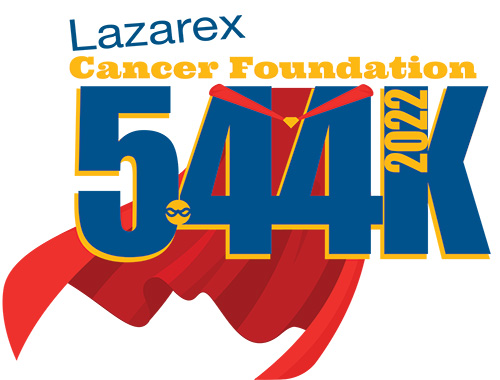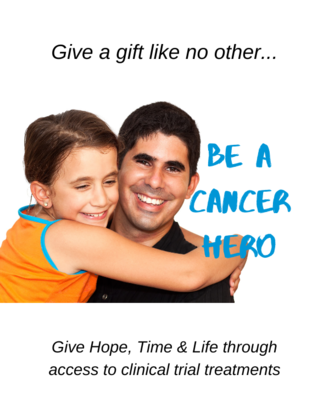The Biden Administration has introduced a federal proposal to have Medicare pay for navigation services for cancer patients. Here are four points that I believe must be considered to ensure the proposal delivers on its promise of driving real change for patients.
By Dana Dornsife, Founder and Chief Mission and Strategy Officer, Lazarex Cancer Foundation

The Biden Administration has introduced a federal proposal to have Medicare pay for navigation services for cancer patients. Patient navigation is a concept that has about as widespread support as you can find these days. Anyone who loves someone who has cancer and anyone doing advocacy work in the cancer space is likely in favor of all of patient navigation and telehealth cancer care.
So you might think – what is there to weigh in on here? The reality is, in order for legislation like this to make a real difference in patients’ lives, we must clearly define patient navigation, how and when it works best, and where it is currently falling short.
The promise of patient navigation vs the reality
The Center for Medicare and Medicaid Services (CMS) has released a proposal for the 2024 Medicare Physician Fee Schedule that includes a coding change to allow for reimbursement of some patient navigation services and expansion of access to telehealth services. This change is intended to help individual patients and address health equity by better meeting the needs of underserved communities.
Patient navigators do just as their name suggests – they help patients navigate the complex and often confusing world of cancer care. When patients work with navigators, data overwhelmingly shows that patients get more timely screenings, diagnoses, appointments, treatment and care. They understand more about their condition and health disparities are reduced.
There’s no question that patient navigation in theory – is great. However, reality doesn’t always match up to the promise, and a lot of cancer patients are finding limitations in how it’s being offered. Unfortunately, this is something we encounter every day. Our non-profit reimburses cancer patients for the cost of travel to and from clinical trials. Cancer patients come to us when standard treatment has stopped working and they run into barriers finding, accessing and affording the travel to their clinical trials. We work to break those barriers by helping identify trials, reimburse for clinical trial travel, provide cancer education and resources in community HUBS and more. We’ve helped 10,000 patients in the last 17 years, and we’ve heard a lot of stories about the challenges these patients encounter every day.
As First Lady Dr. Jill Biden has said – this proposal is an important ‘first step.’ Here are four other discussion points that I believe must also be part of the discussion to ensure the proposal delivers on its promise of driving real change for patients.
1. Clearly define patient navigation. Navigation is a very broad term and means many different things to many different institutions and people. It’s being activated in very different ways at many different institutions so we need to be specific about what navigation means and what Medicare will actually cover.
2. Ensure patient navigation extends beyond institutions. Today, most medical institutions have some type of navigation helping patients find their way through the medical system at their institution where they’re being treated. For many cancer patients, however, there is a well documented travel burden. Cancer patients who we help, travel an average of 544 miles to get to the clinical trials they need. Treatment is often far from home so a navigator who is only helping maneuver through a local institution isn’t always helpful. Beyond that, many patients don’t have a medical home or may not live near a cancer center or clinic. So patient navigation is only useful when it includes all potential FDA-approved therapeutic cancer clinical trials – not just the ones at your local hospital, clinic or cancer center.
3. To drive equity, ensure patient navigation reaches into communities. Around forty percent of cancer is preventable when you have access to the proper screening and in our work, we have found that patient navigators can boost minority participation in clinical trials by 63%. In order for that to happen, patient navigation has to be at play not only inside institutions, but also within communities. That’s where the vast majority of individuals who are underinsured, not insured at all and impacted by health disparities are likely to be rather than in a medical facility. So patient navigation has to be at play in communities.
Navigation also needs to be culturally appropriate and place based. Through our creation of the Lazarex Cancer Wellness HUBS in underserved areas of Philadelphia, Los Angeles and San Francisco, we have seen that it is possible to set criteria for someone to become an effective patient navigator, neighborhood ambassador or cancer care companion – even if they don’t have medical backgrounds or experience. They can still be trained to serve as a critical part of the patient’s journey and the warm hand to get patients where they need to be seen..
4. Consider interstate issues for telehealth to work in cancer care. During COVID, we worked with a patient in Colorado whose clinical trial was in California. They were able to communicate via telehealth because of emergency rules due to the pandemic. But since those emergency rules expired, the doctor is no longer allowed to offer telehealth medicine with the patient because he’s only licensed in California – even if the telehealth appointments are only discussions. So the patient is faced with two choices – travel 1,100 miles to see her doctor, or abandon her trial altogether because she can’t afford it or doesn’t feel well enough to make the trip once or twice a month. A lot of doctors would love to offer telehealth services and most patients we know are very much in favor of them. But if a doctor can’t practice beyond state lines, telehealth is likely to encounter barriers in cancer care because so many patients are traveling for treatment.
The bottom line is – expanding access to patient navigation and telehealth is great in theory. But we need patients, advocates and community organizers to weigh in on the realities of the burdens, challenges and barriers that patients face every day in these areas if we want this rule change to be more than just words. As the Founder of a cancer foundation focused on patient assistance, I certainly want that… and I’m sure you do too. So, let the conversation begin!
Dana Dornsife founded Lazarex Cancer Foundation when her brother-in-law was diagnosed with cancer and couldn’t afford the travel costs to and from his cancer clinical trial. Mike passed away 15 years ago but his legacy lives on through the Foundation which helps more than 1,000 patients a year access cancer clinical trials.




